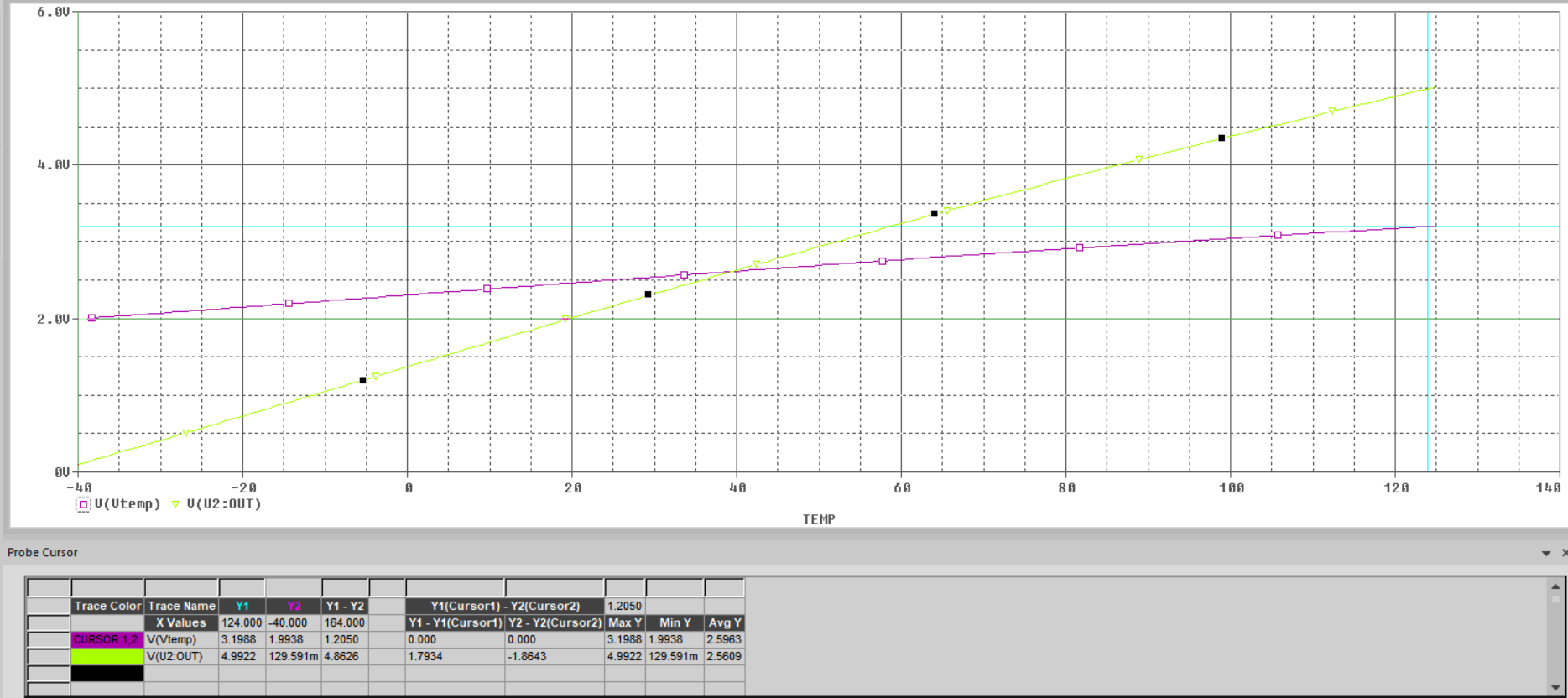SBOU246 January 2022 TMP61 , TMP61-Q1 , TMP63 , TMP63-Q1 , TMP64 , TMP64-Q1
4.2 Active Voltage-Biased
The hardware change for the active thermistor network involves a few more steps. Similar to the simple design above, the first hardware change is to swap the NTC and TMP61 thermistors, while RBIAS can remain as is.
Figure 4-4 TMP6 Linear Thermistor Schematic With Op Amp
Following the design steps of the guide, we end up with resistance values of RBIAS = 10 kΩ, R1 = 6.84 kΩ, R2 = 6.25 kΩ and R3 = 10 kΩ. The resulting V_OUT has range of 0.129 V to 4.86 V, which is within the linear operating range of the op amp and provides better resolution. These design decisions result in the voltage response shown in Figure 4-5 below. Figure 4-5 TMP6 Linear Thermistor With Op Amp Voltage Response.
Figure 4-5 TMP6 Linear Thermistor With Op Amp Voltage Response.